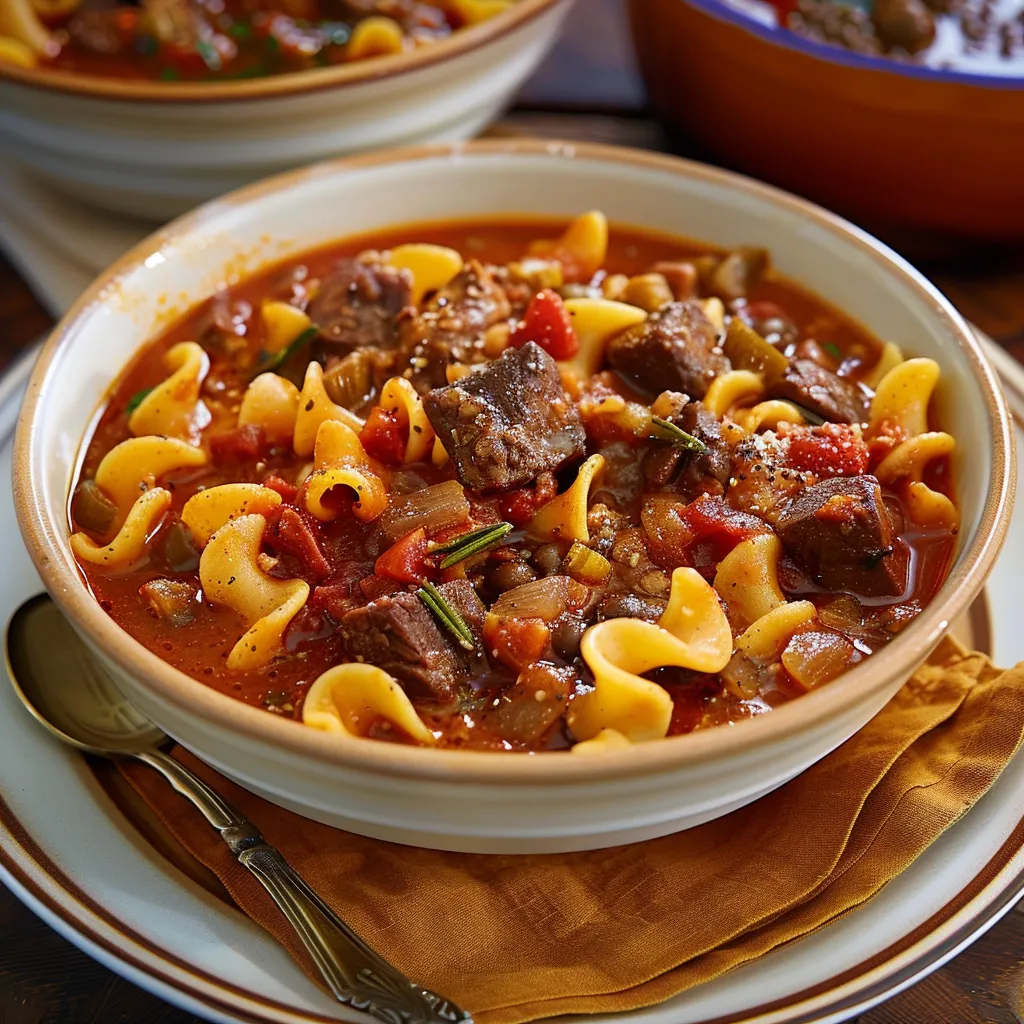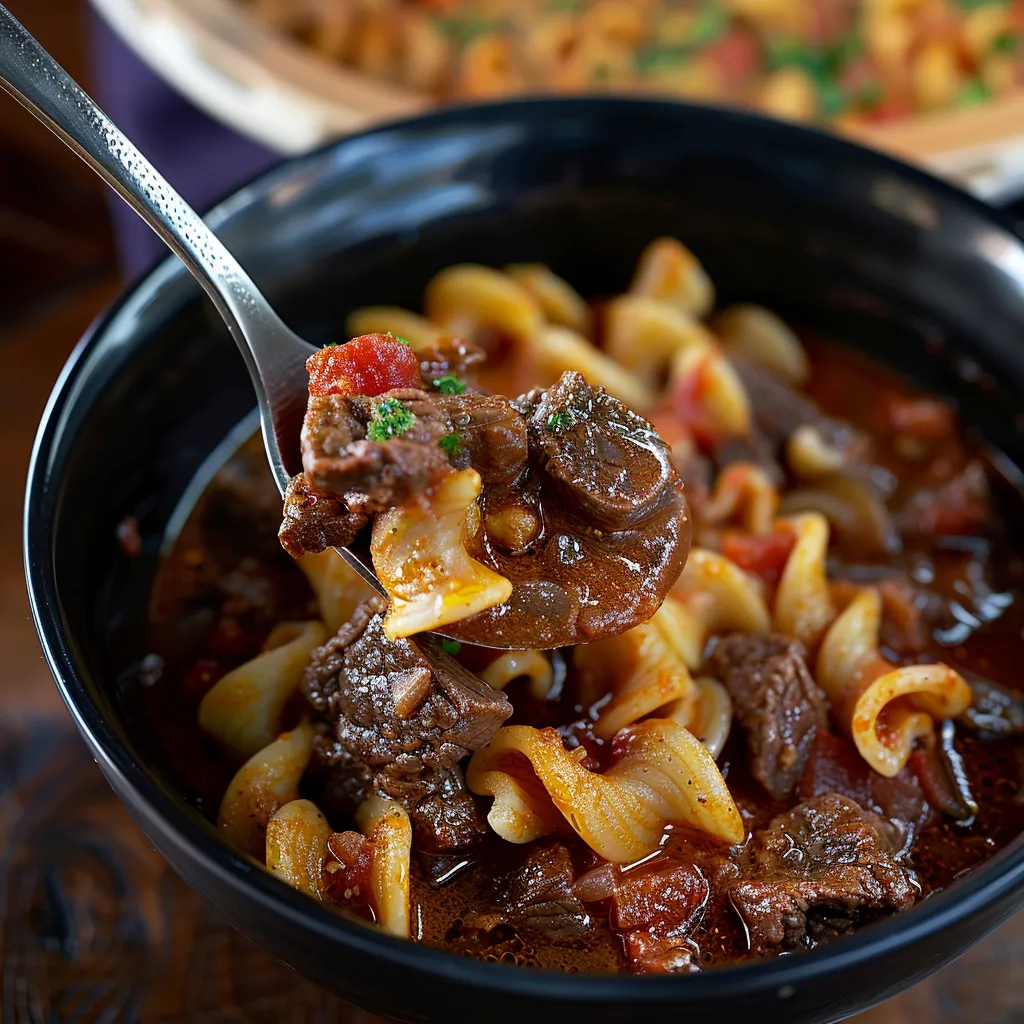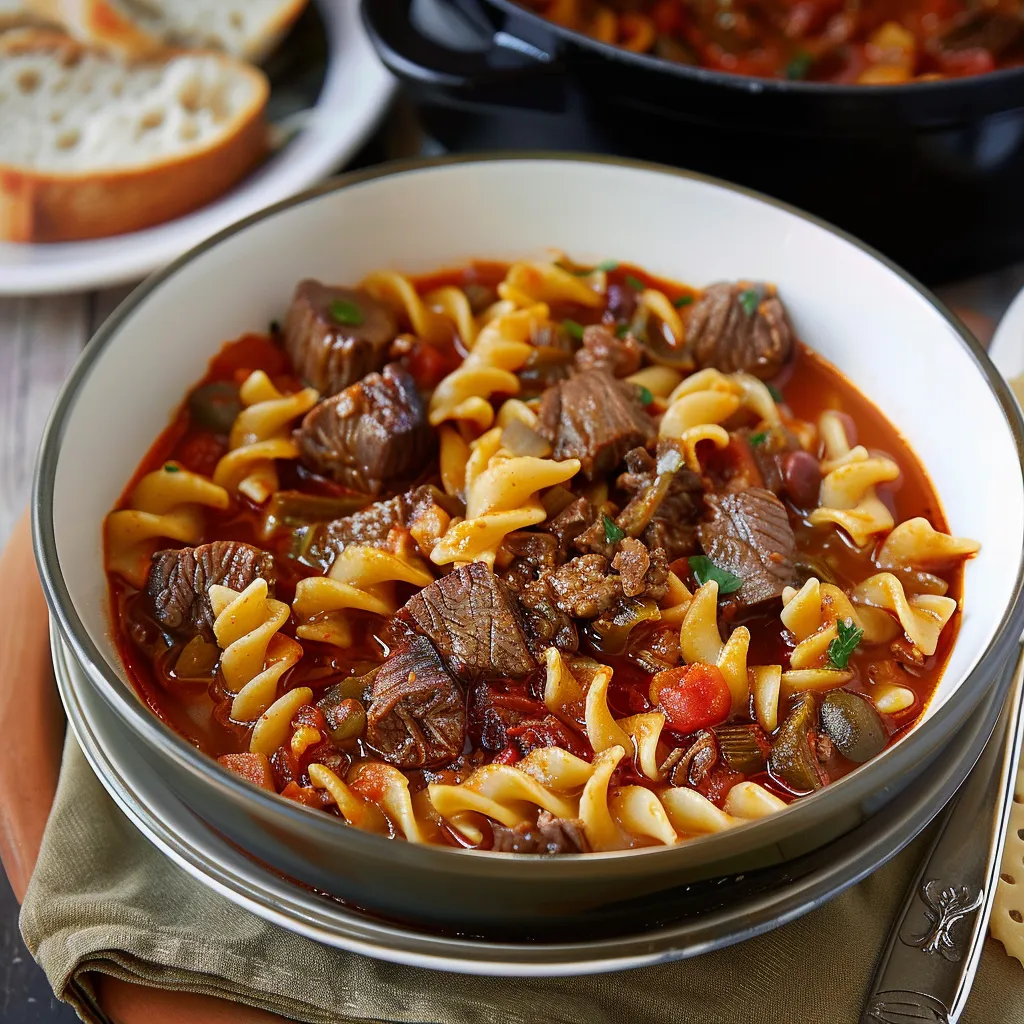 Pin to Favorites
Pin to Favorites
A bowl of Beefy Pasta Puttanesca Soup is pure comfort with an Italian twist - tender chunks of beef swimming in a rich, savory broth punctuated by briny olives and capers. This hearty soup transforms the bold flavors of traditional pasta puttanesca into a warming, satisfying meal that's perfect for cold evenings. The long, slow cooking creates fork-tender beef while allowing the flavors to develop into something truly special.
After discovering this combination by happy accident in my own kitchen, it's become one of my most requested recipes. The first time I served it to my Italian friend Marco, he was skeptical - until he took his first spoonful and declared it "brilliantly unconventional."
Essential Ingredients and Selection Tips
- Stewing Beef: Choose well-marbled chunks with some fat for the best flavor. Look for pieces about 1-inch in size for even cooking.
- Puttanesca Sauce: A good quality jarred sauce saves time without sacrificing flavor. Look for one with visible pieces of olives and capers.
- Beef Broth: Homemade is best, but a good quality store-bought broth works well. Choose low-sodium to control the salt level.
- Pasta: Small shapes like orecchiette or ditalini work best, though egg noodles are classic. They should be substantial enough to hold up to the hearty broth.
 Pin to Favorites
Pin to Favorites
Detailed Cooking Instructions
- Initial Browning:
- Heat oil in a large skillet until it shimmers. Brown the beef cubes on all sides in batches to avoid overcrowding, developing a rich crust. Transfer each batch to your slow cooker or Instant Pot as it's done.
- Slow Cooker Method:
- Add the browned beef to your slow cooker along with beef broth, diced tomatoes, and puttanesca sauce. Cover and cook on low for 6-8 hours. Stir in pasta during the last 30 minutes, cooking until al dente.
- Instant Pot Method:
- After browning the beef using the sauté function, add broth, tomatoes, and sauce. Scrape the bottom to release any stuck bits. Pressure cook on high for 60 minutes with natural release. Add pasta after releasing pressure, letting it cook in the residual heat.
Growing up in an Italian-American household, I learned that a good soup should be "abbastanza denso da reggere il cucchiaio" - thick enough to hold up a spoon.
Broth Development
The soup will become richer as it cooks. If it gets too thick, thin it with additional hot beef broth. If the tomatoes are too acidic, a pinch of sugar helps balance the flavors.
Vegetable Additions
Add carrots, celery, or other vegetables about halfway through cooking time. This ensures they're tender but not mushy. Root vegetables like carrots can go in earlier.
Make-Ahead Tips
The soup base (everything except pasta) can be made ahead and frozen. When ready to serve, thaw, reheat, and cook fresh pasta directly in the hot soup.
Serving Suggestions
A sprinkle of freshly grated Parmesan and torn basil leaves make perfect garnishes. Serve with crusty bread for soaking up the flavorful broth.
Final Thoughts: This Beefy Pasta Puttanesca Soup represents the beauty of culinary improvisation. What started as a pantry challenge has become a beloved recipe that combines the best of Italian flavors with the comfort of beef stew. Through many iterations in my kitchen, I've found that patience during the browning process and allowing time for the flavors to meld creates a soup that's both sophisticated and satisfying. Whether served on a cold winter evening or as a Sunday supper, this soup proves that sometimes the best recipes come from thinking outside the traditional box.
 Pin to Favorites
Pin to Favorites
Frequently Asked Questions
- → Can I use different types of pasta?
- Yes, any small pasta shape works well, though egg noodles are recommended for best results.
- → What cut of beef works best?
- Any stewing beef cuts like chuck, brisket, or round work well as they become tender with slow cooking.
- → Can I make this ahead of time?
- Yes, but add the pasta just before serving to prevent it from becoming too soft.
- → What is puttanesca sauce?
- It's an Italian sauce made with tomatoes, olives, capers, and anchovies for a bold, salty flavor.
- → Why add sugar to the sauce?
- A small amount of sugar helps balance the acidity from the tomatoes if needed.
